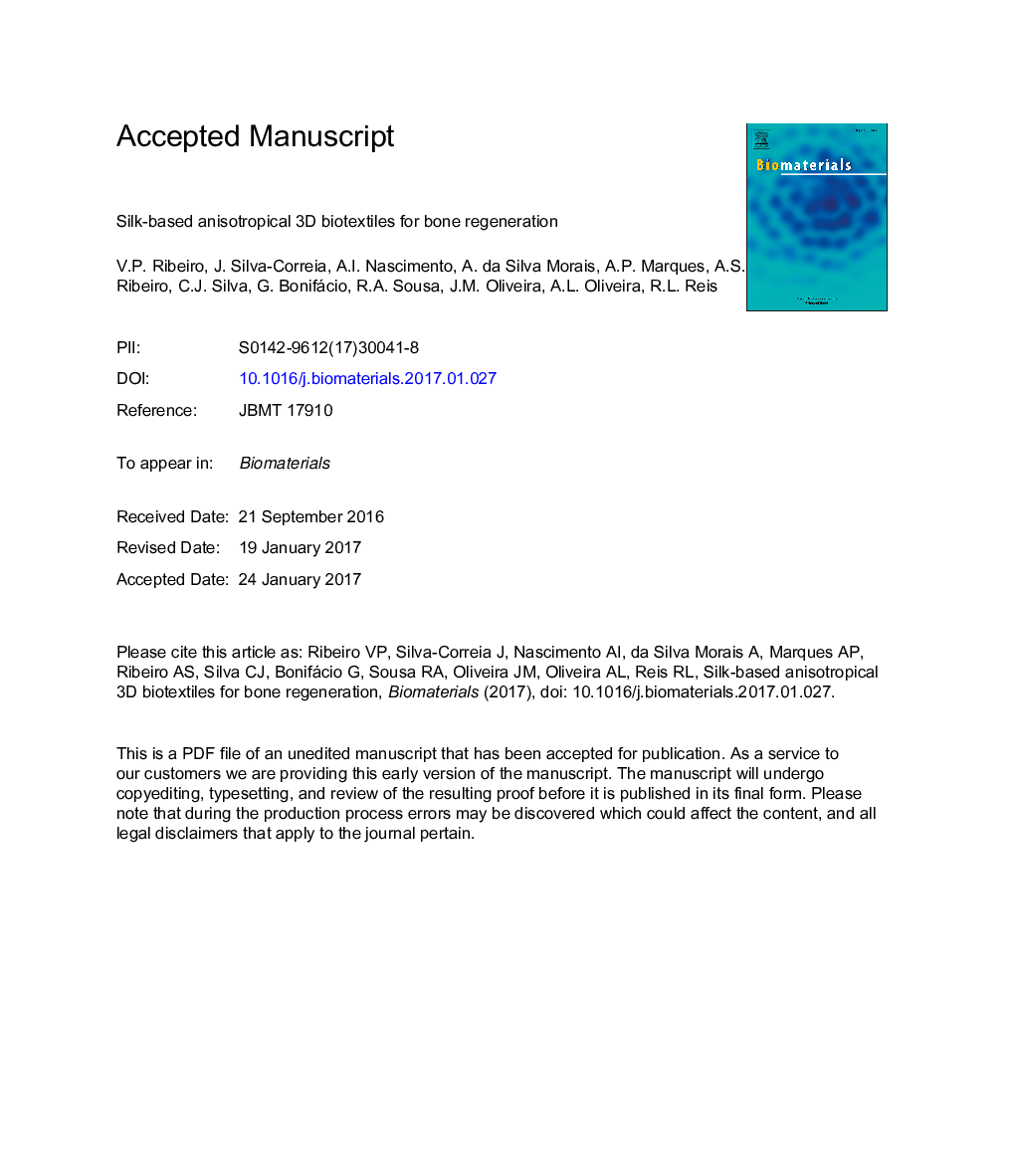| کد مقاله | کد نشریه | سال انتشار | مقاله انگلیسی | نسخه تمام متن |
|---|---|---|---|---|
| 4752436 | 1416144 | 2017 | 32 صفحه PDF | دانلود رایگان |
عنوان انگلیسی مقاله ISI
Silk-based anisotropical 3D biotextiles for bone regeneration
دانلود مقاله + سفارش ترجمه
دانلود مقاله ISI انگلیسی
رایگان برای ایرانیان
کلمات کلیدی
موضوعات مرتبط
مهندسی و علوم پایه
مهندسی شیمی
بیو مهندسی (مهندسی زیستی)
پیش نمایش صفحه اول مقاله

چکیده انگلیسی
Bone loss in the craniofacial complex can been treated using several conventional therapeutic strategies that face many obstacles and limitations. In this work, novel three-dimensional (3D) biotextile architectures were developed as a possible strategy for flat bone regeneration applications. As a fully automated processing route, this strategy as potential to be easily industrialized. Silk fibroin (SF) yarns were processed into weft-knitted fabrics spaced by a monofilament of polyethylene terephthalate (PET). A comparative study with a similar 3D structure made entirely of PET was established. Highly porous scaffolds with homogeneous pore distribution were observed using micro-computed tomography analysis. The wet state dynamic mechanical analysis revealed a storage modulus In the frequency range tested, the storage modulus values obtained for SF-PET scaffolds were higher than for the PET scaffolds. Human adipose-derived stem cells (hASCs) cultured on the SF-PET spacer structures showed the typical pattern for ALP activity under osteogenic culture conditions. Osteogenic differentiation of hASCs on SF-PET and PET constructs was also observed by extracellular matrix mineralization and expression of osteogenic-related markers (osteocalcin, osteopontin and collagen type I) after 28 days of osteogenic culture, in comparison to the control basal medium. The quantification of convergent macroscopic blood vessels toward the scaffolds by a chick chorioallantoic membrane assay, showed higher angiogenic response induced by the SF-PET textile scaffolds than PET structures and gelatin sponge controls. Subcutaneous implantation in CD-1 mice revealed tissue ingrowth's accompanied by blood vessels infiltration in both spacer constructs. The structural adaptability of textile structures combined to the structural similarities of the 3D knitted spacer fabrics to craniofacial bone tissue and achieved biological performance, make these scaffolds a possible solution for tissue engineering approaches in this area.
ناشر
Database: Elsevier - ScienceDirect (ساینس دایرکت)
Journal: Biomaterials - Volume 123, April 2017, Pages 92-106
Journal: Biomaterials - Volume 123, April 2017, Pages 92-106
نویسندگان
Viviana P. Ribeiro, Joana Silva-Correia, Ana I. Nascimento, Alain da Silva Morais, Alexandra P. Marques, Ana S. Ribeiro, Carla J. Silva, Graça Bonifácio, Rui A. Sousa, Joaquim M. Oliveira, Ana L. Oliveira, Rui L. Reis,